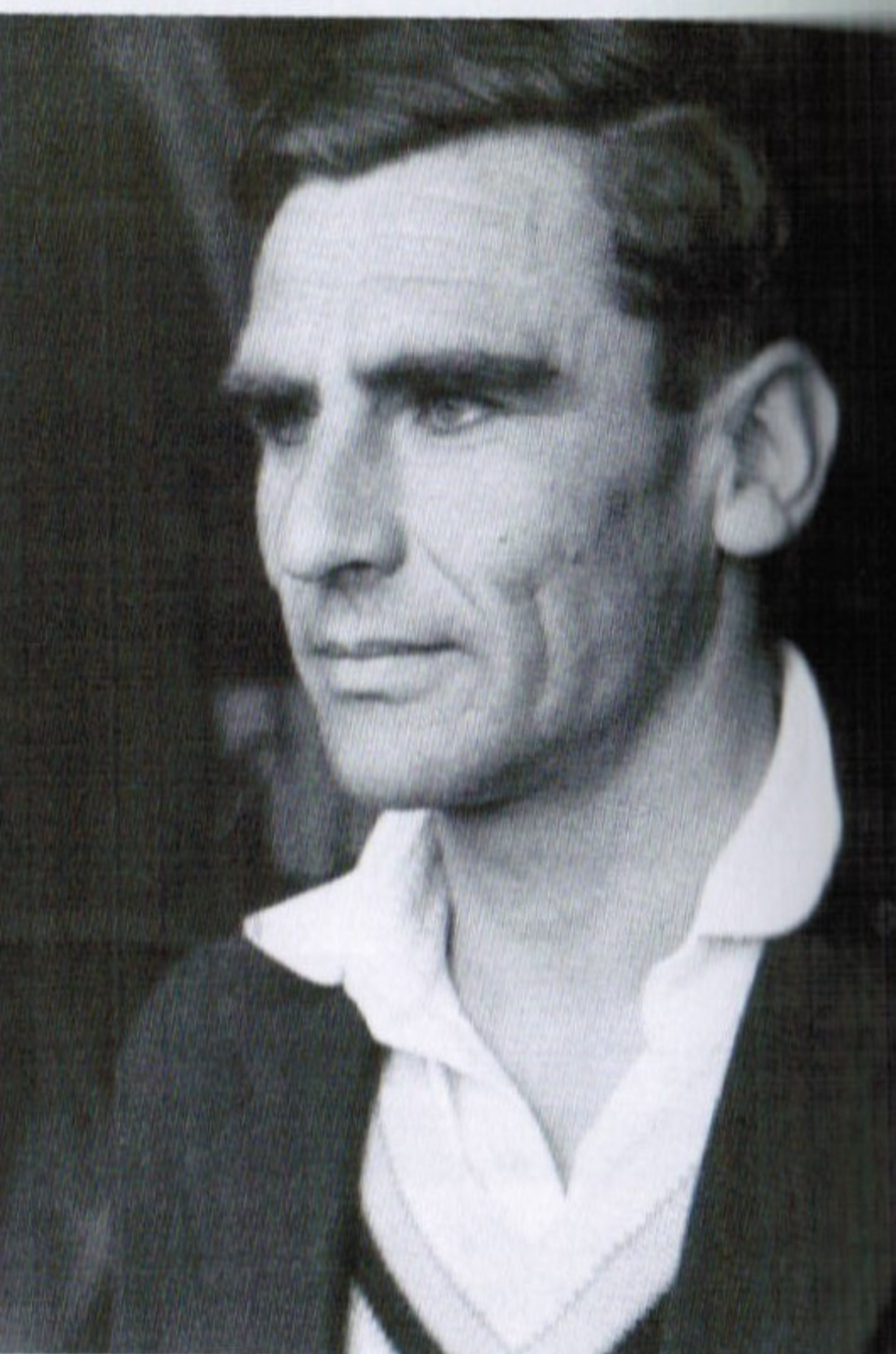A rather dogged and very determined left-hand batsman of medium height and build, Willatt, as can be imagined, was not the most attractive of run getters. Rarely did he produce a glorious cover drive; he rather concentrated on deflections or hooks. In addition to his batting he was an excellent fielder, though he embarrassingly dropped Pat Vaulkhard early on in that cricketer’s most famous innings. Vaulkhard had left Notts for Derbyshire and in 1946 at Trent Bridge hit 264, the highest score of the season and second in Derbyshire's list of high scores; it proved to be his only century and came courtesy of Willatt's drop.
Guy Longfield Willatt was born in The Park, Nottingham on 7 May 1918 and was the son of a local solicitor. Educated at Repton, where he was in the Eleven for three seasons, Wisden commented of him in 1935: “With a sound defence Willatt should, with increasing strength and experience, become really good.”
Going up to St Catherine’s College, Cambridge, he played in the Freshman’s Match in 1938 but only made two first-class appearances for the University that summer. In 1939 he again played once for Cambridge, as well as making his Notts debut on 10 May against the University at Fenner’s, scoring 59.
The outbreak of War saw him commissioned in the Royal Artillery. He served in the North African campaign, where he was considered a rather eccentric soldier. With the end of hostilities, he resumed his studies and gained a regular place in the 1946 Cambridge side. He began the season by hitting a century in the Seniors’ Match and by the end of the year topped the Cambridge batting averages – he was the only undergraduate to score a century and this he made against a very powerful Middlesex side. His 112 lasted four hours and was “a fine display of dogged patience”. Unlike today, the counties then took the matches against Oxford and Cambridge very seriously.
He joined the Notts side during the summer vacation, usually batting at No. 6. Notts had an exceptionally batting line up that year, the first five being Keeton, Harris, Simpson, Hardstaff and Heane.
In 1947 Willatt captained the University and saved his side from defeat at Lord’s with a masterly 90 – about 15,000 spectators watched the first day’s play. With three hundreds, he again led the Cambridge batting averages. Both Bailey and Insole were members of the same side. In July and August, Willatt played ten games for Notts, this time opening the batting with Keeton; he hit two hundreds for Notts, 131 against the formidable Surrey attack of Gover, Bedser and Laker at The Oval, and 112 at Northampton. In 22 First-Class matches for Notts he had scored 844 runs @24.82.
In September 1947, he took a teaching post at Edinburgh Academy and during 1948 and 1949 played Club Cricket in Scotland – in the later season he hit six hundreds in 12 innings during July and actually captained Scotland, much to the annoyance of some of the natives.
Willatt then returned to his old school, Repton, signing a contract that released him for each summer to play for Derbyshire. He was supposed to captain the County during August 1950 but in the second over of his debut game – v Warwickshire at Edgbaston – he fractured his left hand and that put him out for the rest of the campaign. His old adversary, Pat Vaulkhard, led Derbyshire in his place!
His leadership of Derbyshire therefore commenced in earnest in 1951, his three years away from First-Class cricket showed and in 49 innings he averaged just 17.93. The 1952 season witnessed a transformation - not only did Derbyshire rise significantly in the Championship, finishing fourth, but Willatt hit 1,624 runs at an average of 35.30 and was selected to represent Gentleman v Players at Lord’s.
Willatt and Derbyshire each had another good year in 1954 when Wisden commented: “Willatt again led Derbyshire with enterprise”. Derbyshire reached third place in the table and possessed, in Gladwin and Jackson, the strongest opening attack in the country.
Willatt then resigned as Derbyshire captain and took a post as headmaster at Heversham Grammar School in the Lake District. His club cricket was now for Kendal CC in the Northern League. He moved to become Headmaster of Pocklington and was still playing club cricket, for the Pixies, at the age of 60.
He retired and moved back to Repton. Derbyshire were soon keen to co-opt him on to their Committee and later he was Chairman of the Cricket Sub-Committee for some years.
Apart from his cricketing ability he gained a soccer blue. His son Jonathan gained a cricket blue in 1989. Guy Willatt died in Derby on 11 June 2003. In total he appeared in 185 First-Class fixtures scoring 8,325 runs @29.10.
April 2020
Nottinghamshire First-Class Number: 370
